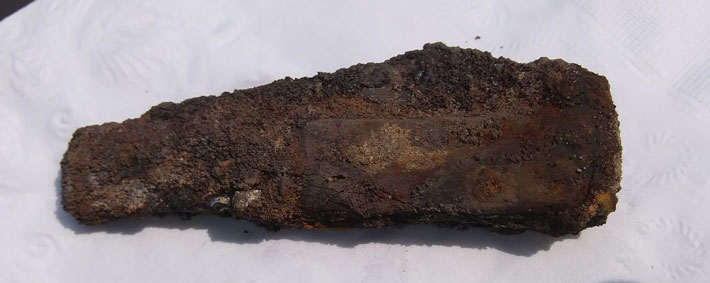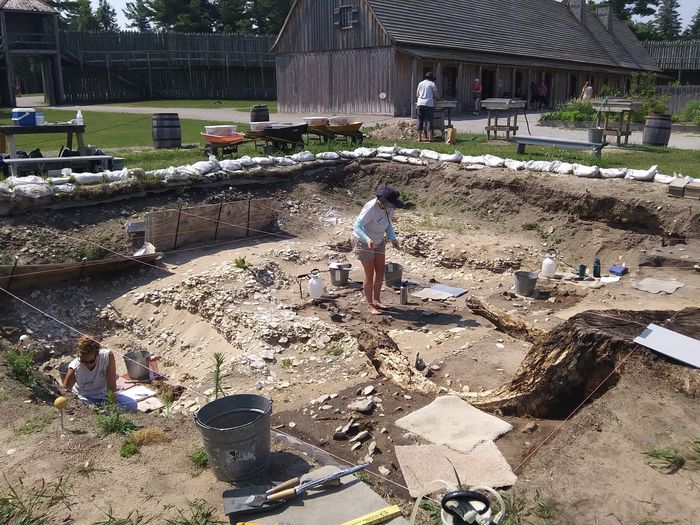Archaeologists unearth a unique artifact at Fort Michilimackinac: a pocket knife
MLive reports that Lynn Evans of Mackinac State Historic Parks and her colleagues discovered a 3.5-inch-long pocketknife, or clasp knife, in a root cellar of the Southeast Rowhouse at Colonial Michilimackinac.
A long-running archaeological dig at a historic Michigan fort turned up a new treasure over the holiday weekend.
While digging near a post in a root cellar at Colonial Michilimackinac on July 4, archaeologists unearthed a 3 1/2-inch pocketknife, also known as a clasp knife.

Dr. Lynn Evans, the curator of archaeology for Mackinac State Historic Parks, said the knife is about 1 inch high at the tip of the blade’s peak. According to Evans, the knife may be of French or British origin. Its exact age is currently unknown.
The knife’s discovery is the latest in a string of finds at Colonial Michilimackinaw, a reconstructed 18th-century fort and fur trading village now home to one of the nation’s longest-running archaeology programs.
Over the course of more than 60 years, annual seasonal digs have unearthed more than 1,000,000 artefacts.
The program’s current excavation site is located at what’s known as House E of the fort’s Southeast Rowhouse.
In recent years, other found artefacts have included a lead seal dating between 1717 and 1769, a brass sleeve button with an intaglio bust on it, a potential structural post dating to the original 1715 fort, an engraved “Jesuit” trade ring, a brass serpentine side plate for a British trade gun, complete remnants from a creamware plate, and other items.
Archaeologists are on site every day at the fort, weather permitting, throughout the summer.
Visitors can witness the archaeologists continuing their excavations at the site from early June until mid-August.
The best artefacts are on display at the fort’s “Treasures from the Sand” exhibit, as well as in the book Keys to the Past, written by Evans.






